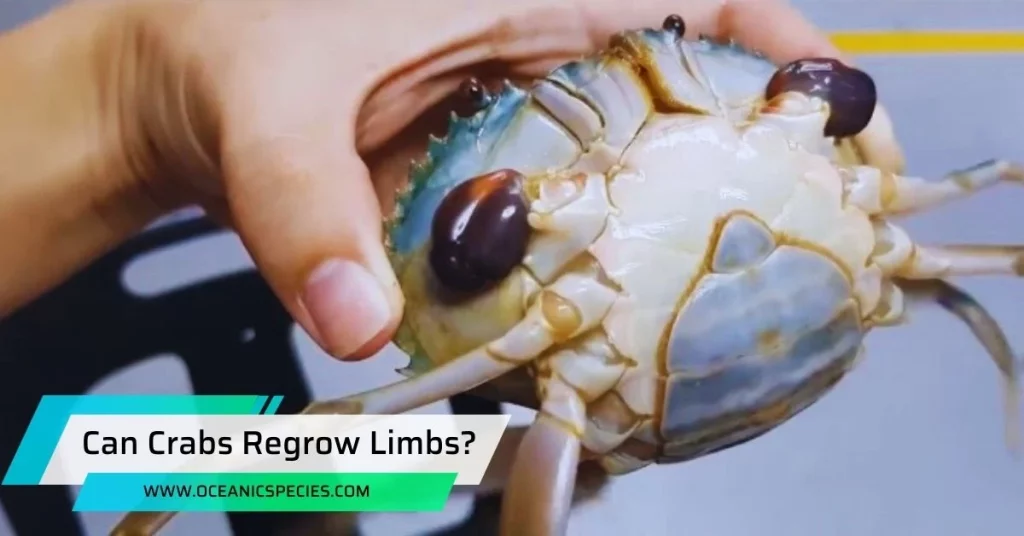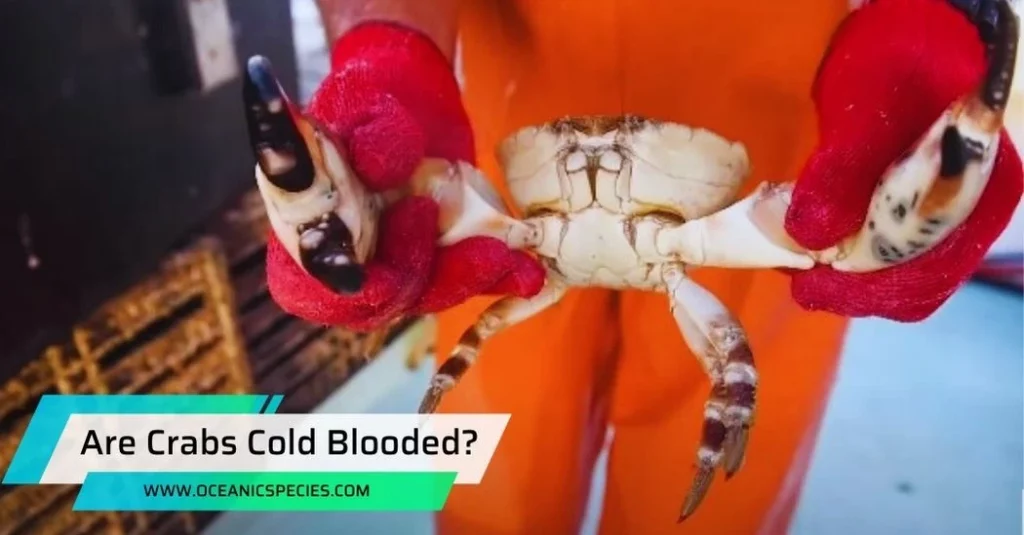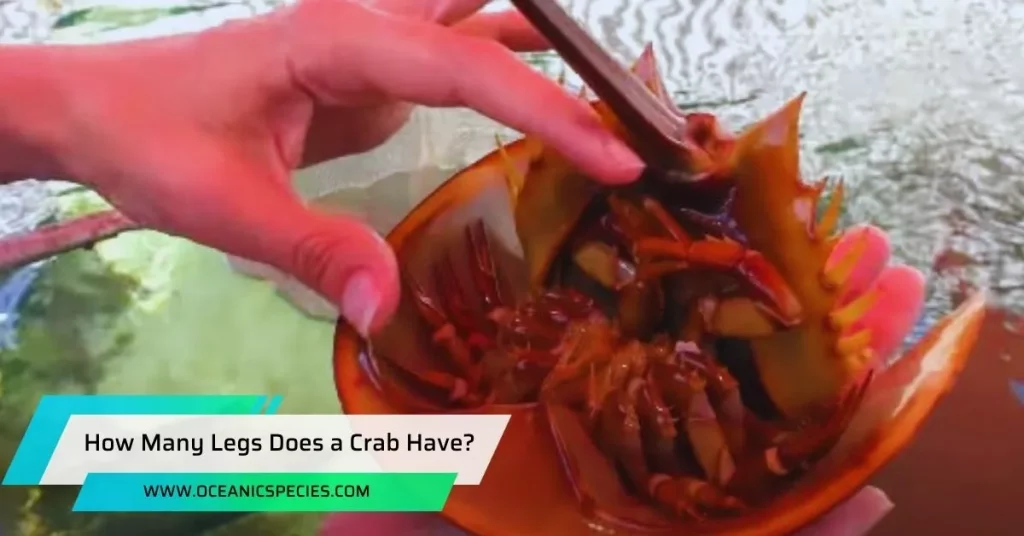Crabs do not pee. They excrete waste through special openings in their bodies.
Crabs excrete waste through a specific organ called the colex gland, which is attached to their second antennae. They remove waste products through the telson opening, which is the last segment on their body. Unlike fish, crabs can survive out of water for long periods as long as their gills stay moist.
When out of water, they seek dark and moist places to prevent their gills from drying out and to hide from predators. It is not recommended to eat the viscera or internal organs of crabs, as they contain higher levels of domoic acid.
The Excretory Organ Of Crabs

The excretory organ of crabs, known as the colex gland, consists of green glands attached to their second antennae for waste excretion. Crabs remove waste products through the telson opening, the last segment of their body.
The excretory organ of crabs is known as the colex gland. It consists of green glands that are attached to the second antennae, which they use for excretion. Here is a breakdown of the key aspects of the excretory organ of crabs:
Description Of The Colex Gland:
The colex gland is the excretory organ of crabs. It consists of green glands that aid in the excretion process. These glands are connected to the second antennae of the crabs.
Role Of Green Glands In Excretion:
The green glands play a crucial role in the excretion process of crabs. They help in removing waste products from the crab’s body. The green glands filter out waste materials from the crab’s circulatory system.
Connection Of Green Glands To The Second Antennae:
The green glands are specifically attached to the second antennae of the crabs. This connection allows for efficient excretion of waste products. The second antennae, in conjunction with the green glands, facilitate the removal of waste from the crab’s body.
The Process Of Waste Removal

Crabs excrete waste through their colex gland, which consists of green glands attached to their second antennae. Waste products are eliminated through the telson opening, the last segment on their body. Crabs can survive out of water for over 24 hours as long as their gills are kept moist.
Crabs, like many other organisms, have a unique process for waste removal. Let’s delve into the fascinating world of crab excretion and explore the various mechanisms involved in this process.
Explanation Of The Two Chambered Stomachs:
Crabs possess two chambered stomachs that play a crucial role in their digestion and waste removal process. These stomachs are designed to efficiently break down their food and extract nutrients. Here’s a breakdown of how these stomachs work:
First Chamber: The anterior chamber serves as a grinding mill. It contains small, calcified plates that grind and crush the food into smaller particles.
Second Chamber: The posterior chamber functions as the main storage and digestion unit. It secretes digestive enzymes and absorbs the nutrients from the partially digested food.
Function Of The Grinding Mill:
The grinding mill, located in the anterior chamber of the crab’s stomach, has an important role in the digestive process. Here’s how it functions:
Crushing and Grinding: The calcified plates in the grinding mill crush and grind the food particles into smaller, more manageable pieces. This initial breakdown aids in the efficient digestion of the food.
Increased Surface Area: By breaking down the food into smaller particles, the grinding mill increases the surface area available for the digestive enzymes to work on. This allows for more efficient absorption of nutrients later in the digestion process.
The Telson Opening As The Point Of Waste Removal:
The waste removal in crabs occurs through a specific opening called the telson. The telson is located at the last segment of the crab’s body and serves as an exit point for waste materials. Here’s how this process works:
Waste Passage: After the digestive process is complete, the waste materials from the posterior chamber of the stomach pass through the intestinal tract and reach the telson opening.
Expulsion: The waste materials are excreted from the crab’s body through the telson opening. This ensures the removal of unnecessary or harmful substances from the crab’s system.
Comparison With Other Excretory Systems
Crabs have a unique excretory system consisting of colex glands and green glands attached to their antennae. Waste products are expelled through the telson opening at the end of their body.
Contrasting The Excretory System Of Crabs With Other Animals:
Crabs have a unique excretory system that differs from other animals in several ways:
- Crabs have green glands, also known as coxal glands, for excretion, while other animals may have different excretory organs such as kidneys or Malpighian tubules.
- Unlike animals with internal excretory systems, crabs have external excretory openings called the telson opening.
- The green glands in crabs are attached to their second antennae and are responsible for the filtration and excretion of waste products, whereas other animals may have different mechanisms for waste removal.
Examining The Efficiency Of The Crab Excretory System:
The crab excretory system is highly efficient and well-adapted to their aquatic environment:
- The green glands in crabs perform the crucial function of removing waste products, maintaining the balance of internal fluids, and filtering out toxins from their bodies.
- The two chambered stomachs in crabs, along with their special grinding mill, facilitate efficient digestion and waste processing.
- The telson opening, located at the rear end of the crab’s body, allows the waste products to be expelled easily, ensuring a streamlined excretion process.
Highlighting Unique Adaptations In The Crab Excretory System:
Crabs have developed specialized adaptations to enhance their excretory system:
- The green glands in crabs are capable of filtering both liquid and solid waste, ensuring thorough waste removal.
- The location of the green glands on the second antennae allows for easy access to water, which aids in filtration and waste removal.
- The telson opening serves as a dedicated exit for waste products, preventing any build-up or blockage within the crab’s body.
- Overall, the crab excretory system demonstrates an efficient and specialized adaptation that supports their survival and thriving in their aquatic habitats.
Frequently Asked Questions On Do Crabs Pee
How Does Crabs Excrete Waste?
Crabs excrete waste through their colex gland, which is attached to their second antennae. Waste is removed through the telson opening at the end of their body.
How Long Do Crabs Live Out Of Water?
Crabs can live out of water for over 24 hours as long as their gills stay moist.
Is It Ok To Eat Crab Guts?
Consumers should not eat crab guts or viscera as they contain higher levels of domoic acid than crab meat.
Do Crabs Clean Themselves?
Yes, crabs do clean themselves. They have specialized organs called green glands that help in excretion.
Conclusion
To conclude, while it may seem like an unusual topic, it turns out that crabs do indeed have a method of excreting waste. Their excretory organs, called colex glands, consist of green glands attached to their second antennae. These glands are responsible for eliminating waste products from the crab’s body.
Crabs have two chambered stomachs with a special grinding mill, and waste is removed through the telson opening, which is the last segment on their body. While crabs can survive out of water for extended periods, it’s important to note that they still require moist environments to keep their gills from drying out.





